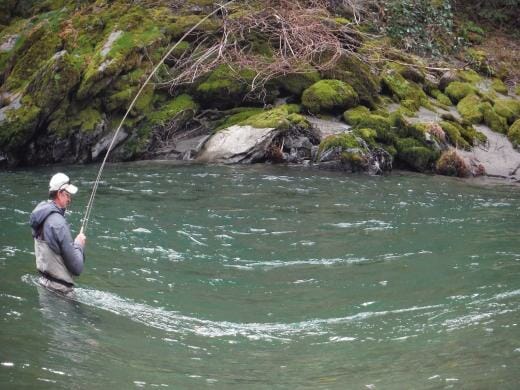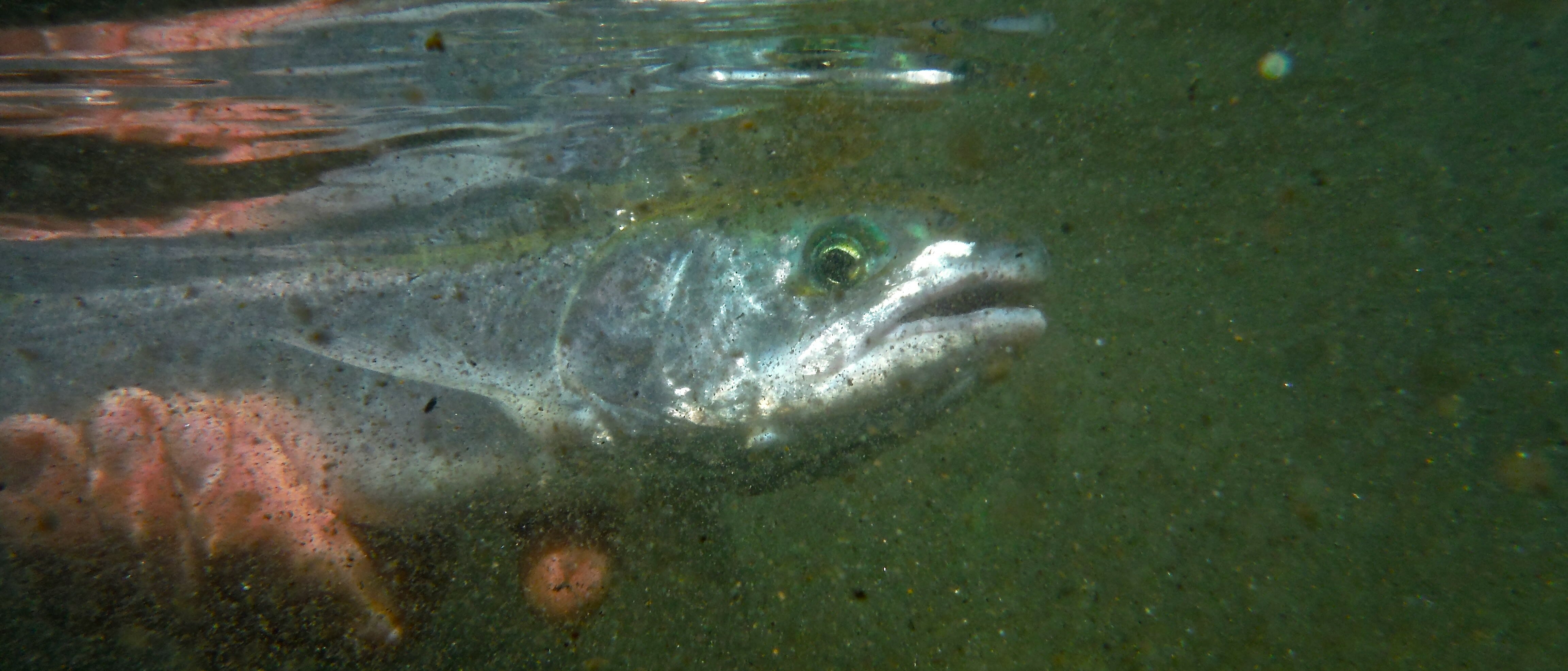A “half-pounder” steelhead from northern California’s Trinity River.
My buddy Sam and I met at the Fly Shop in Redding, Calif., eager to make the springtime drive over the Coastal Range to a little cabin on the banks of the fabled Trinity River. It was the tail end of steelhead season in northern California, and this river, at this time, offered us our best shot at catching some big, migratory rainbows.
Sadly, California was in the throes of its worst drought in memory at the time, and the guys at the fly shop were skeptical of our plans.
“You guys ought to go to pig hunting, instead,” one sad-sack employee said, noting that river levels were skinny, and that in March, the area was experiencing summer-like weather. Indeed, later in the trip, as I drove home over Donner Pass, there was only a skiff of snow on the ground when there should have been several feet.
Worst. Drought. Ever.
As with most fishing trips, there was a back-up plan. Sam works on communications throughout California, and our Trout Unlimited staff in the Golden State was busy negotiating a land-mark agreement that will eventually result in the removal of four dams on the Klamath River, into which the Trinity flows. If the fishing was off, we’d work on press plans and maybe dip into a nice bottle of brown liquor. A night or two in the Northern California forest is never a wasted endeavor.

TU’s Sam Davidson hooked up to a “half-pounder.”
And, predictably, the fishing was tough. Downrunning mature steelhead were sparse—I only saw a single fish. But it wasn’t a total loss. While we never connected with the massive fish the river is famous for, we did hook up with a trout that is unique to the Klamath and Trinity system—early-running steelhead the locals affectionately call “half-pounders.” These smaller versions of their giant siblings run up the river alongside the bigger fish, and while they’re called “half-pounders,” these migratory rainbow trout sometimes push the scale to two pounds or more.
Oh, and did I mention they eat dry flies?
As we tossed big, ugly streamers on the swing for the river’s renowned bruisers, we’d occasionally see a rising fish and ponder the wisdom of our efforts. Finally, late on the first afternoon, a gray drake hatch came off and the half-pounders were rising with regularity. I switched to a 5-weight, tied on a size 14 Adams, and I was in business.
These chrome-bright steelhead were likely only a year removed from their rearing phase on the Trinity, so their memories of more traditional trout food were a bit fresher. Yes, they’re smaller, but they’re every bit as acrobatic as their larger cousins, and, on light tackle, it’s tough to imagine a fish that’s more fun.
Steelhead fishing is hard enough. There’s no need to approach the craft with a skeptical outlook. Thankfully, these eager early-run chromers make chasing steelhead on the Trinity a little easier on the psyche.
— Chris Hunt



